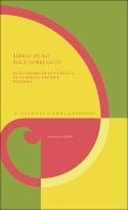Explore

Shepherd's books are often seen as hyper-sweetened, static narrative worlds of Neoplatonic love. In contrast, La Galatea has been seen as the novel that introduces violence - or, at least, that which occurs before the reader's eyes - into this tradition, and at the same time as a literary failure on the part of Alcalá. Nothing could be further from the truth. In fact, a recurring motif in these plots is the continuous ‘startle’ that the characters, beset by multiple dangers, receive. This book offers a survey and analysis of the abundant inclusion of scenes of physical aggression in the complete corpus of pastoral novels written in the Castilian language. Its pages propose a categorisation and diachronic study of the techniques for regulating violence in the development of the genre and its main changes between the 16th and 17th centuries. Through a methodological proposal that merges close and distant reading for the analysis of the transformations of this literary genre, it establishes the constants and variables in the configuration of the economy of violence in this tradition, without abandoning the stylistic study of the scenes, the consideration of the path that marks the influence of some on others, nor the intersection between the pastoral and courtly matter that occurs at the heart of the shepherds' books from their birth to their decline.
This book is included in DOAB.
Why read this book? Have your say.
You must be logged in to comment.
